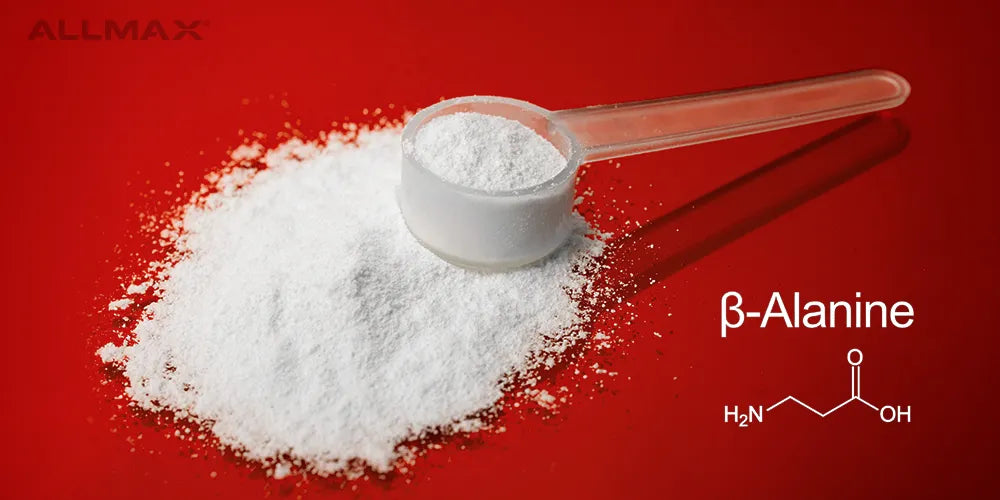Strong, toned abs aren’t just about looking great in a swimsuit—they’re the foundation of your entire body. Whether you’re a pro athlete or just starting your fitness journey, core exercises play a crucial role in every workout.
Table of contents
Your abdominal muscles do more than sculpt your waistline—they stabilize your spine, support movement, and even assist with breathing, making them essential for strength, posture, and overall health.
How Do the Ab Muscles Work?
The rectus abdominis is a long, flat abdominal muscle that extends from the ribs to the pubis and attaches to the xiphoid process at the base of the sternum. This muscle supports the body when moving the head, arms, or legs.
The transverse abdominis is the deepest layer of the abdomen. It wraps around the body from front to back. The best way to picture the transverse abdominis is as a belt that wraps around the waist. Although it surrounds the entire body, the transverse abdominis muscle does not contribute to movement.. Instead, it assists with respiration and breathing.
The internal and external obliques run alongside each other on either side of the rectus abdominis. They support spinal movement, including bending sideways and twisting.
Are All Muscles Created Equal For Men and Women?
The answer to that is – definitely not. While theoretically, men and women have the same muscles, the way a woman carries weight impacts how those muscles can be sculpted. Hence, a need for focused ab exercises for women.
Body composition is the mass ratio of fat and non-fat in the human body. The non-fat mass includes bones, muscles, and organs. One is considered to have a healthy body composition when they have a lower percentage of body fat and a higher percentage of fat-free mass.
Women have less muscle mass than men (men have 61% more). Women need a higher level of body fat for healthy function. Although this benefits overall well-being, it can be challenging since the female body tends to store fat more readily than the male body, making weight loss, body sculpting, and achieving a desired body composition harder.
Because of this, ab exercises for women are essential to target their muscles differently, especially when aiming to enhance their physique.
How To Determine Your Body Composition
Body Mass Index (BMI) is a common method used by both men and women to assess their fitness and overall health. This is determined by the formula: [weight, in pounds / (height, in inches x height, in inches)] x 703. In contrast, body composition does not look at weight. Instead, it measures how much weight comes from lean muscle or fat.
Weight Loss for Women
For many women, achieving a lean and trim midsection can be very challenging. This is especially true for middle-aged women, as the body tends to store more belly fat during this stage of life. Reducing fat in women requires a very detailed approach to diet and exercise. Low or No-Carb Diets, such as the Atkins Diet, have proven very successful for rapid weight loss. However, these approaches can also have detrimental effects on the human body if done incorrectly. Carbohydrates are not a bad thing, despite popular opinion. In fact, carbs are found in all cells and the tissues of all living things. They are required for life. It is just that too much causes weight gain.
Top 10 Best Ab Exercises for Women
Building muscle mass is highly important for women. We all start to show a decline in muscle mass beginning in our 20s. Between the ages of 20 and 90, the average person can lose 50% of their muscle mass. Because of the factors affecting female body composition, women need to be more strategic when targeting abdominal muscles. Whole-body workouts that reduce body fat, combined with specific ab exercises for women, will provide the best results.
These 10 best ab exercises will help tone your ab muscles, improve posture, and boost core strength in just a few minutes a day
Lateral Bear Walk
This exercise strengthens the deep core muscles, shoulders, and legs while improving overall body stability.
How to do it:
Start with shoulders over wrists and knees under hips.
Hover a few inches off the floor.
Keep hips stable, head in line with tailbone, and knees lifted off the floor
Move hands and feet left for three steps.
Move hands and feet right for three steps.
Watch out for:
Do not let your hips sag or rise too high. Keep your body stable and move with control, maintain steady breathing.
Dead Bug
This move targets the deep abdominal muscles and helps improve coordination between arms and legs.
How to do it:
Lie face up on the mat with arms in the air above the torso and legs.
Bend your knees at a 90-degree angle.
Slowly, lower the opposite arm and leg toward the floor. Return to the center and then repeat on the other side.
Watch out for:
Avoid arching your lower back. Keep your core engaged and move slowly to maintain control.
Plank Position
Plank strengthens the core, shoulders, and glutes while improving posture.
How to do it:
Place your elbows on your mat under your shoulders.
Keep feet hip-width apart.
Keep your back flat with your head and neck aligned in a straight line. Drive your elbows into the floor, and squeeze your quads, glutes, and core.
Watch out for:
Do not let your hips drop or raise too high. Keep your spine neutral and your core engaged throughout.
Dynamic Plank
This variation of the plank adds movement to engage more upper-body and core muscles.
How to do it:
Start in the plank position described earlier.
Keep arms and feet hip-width apart.
Engage your abs.
Put your hands on the ground, one hand at a time, until you are in a push-up position.
Watch out for:
Move slowly and avoid twisting your hips. Keep your core tight to protect your lower back.
Bicycle Crunch
This exercise targets the rectus abdominis and obliques for a strong, toned core.
How to do it:
Lie flat on the floor with your lower back pressed to the ground. Tighten your core by pulling your belly button into the ground.
Put your hands behind your head, then bring your knees in towards your chest and lift your shoulder blades off the ground, but be sure not to pull on your neck.
Straighten your right leg out to about a 45-degree angle to the ground while turning your upper body to the left, bringing your right elbow towards the left knee. Make sure your rib cage moves, not just your elbows.
Watch out for:
Avoid pulling on your neck. Move slowly and focus on rotating your torso, not just your arms.
Reverse Crunch

This move isolates the lower abs for better core engagement.
How to do it:
Lie flat on your back.
Raise your legs and keep your knees at a 90-degree angle.
Use your abs to pull your knees up towards your chest and lift your hips off the floor.
Return your legs to the starting position.
Watch out for:
Avoid swinging your legs. Keep the movement controlled and engage your lower abs throughout.
Boat Pose
The Boat Pose strengthens the core and hip flexors while improving balance.
How to do it:
Sit on the floor with your knees bent and feet flat on the floor. Rest your hands on the sides of your thighs.
Lean the upper half of your body back and keep your back straight.
Keep your legs straight and at a 45-degree angle from the floor.
Extend your arms in front of you, parallel to the floor.
Watch out for:
Keep your spine straight and avoid rounding your back. Engage your core to maintain balance.
Alligator Drag
This exercise engages the entire core while challenging upper body strength and stability.
How to do it:
Start in plank position and rest your feet on an object that will slide, such as a towel.
Use your hands to walk forward, dragging your lower body behind you.
Engage your core and tighten your glutes as you walk forward.
After a minute of resting in that position, move backwards with your arms and drag your legs.
Watch out for:
Keep your hips stable and avoid sagging. Move slowly and control each step.
Mountain Climber

Mountain Climbers strengthen the core, shoulders, and legs while improving cardiovascular endurance.
How to do it:
Start in plank position. Keep your hands under your shoulders and feet hip-width apart.
Lift your right knee into your chest, as close as you can lift it.
Return your right leg to the starting position and then bring your left knee to your chest.
Once you have the movement, continue moving, alternating legs at a faster pace.
Watch out for:
Keep your core tight and avoid letting your hips drop. Maintain a straight line from head to heels.
Warrior Balance
This pose strengthens the core, legs, and improves balance and coordination.
How to do it:
Lunge your right foot forward
Bend your knee so that it is at a 90-degree angle. Keep your back leg straight. Make sure your front knee is directly over your foot.
Put your hands on your hips.
Lean forward and put your weight into your front foot. Lift your back foot off the ground.
Straighten your right leg and continue to bring your torso toward a parallel position to the floor. Lean your upper body forward so that it counterbalances your lower body.
Move your left hip so that it is parallel to the floor. Do not let it tilt back. Keep both hips level and pointing toward the floor. The left hip tends to want to cock up, so keep pointing it toward the floor. Putting your hands on your hips can help you feel this.
Keep the floating foot flexed and keep the toes pointing down at the floor. Actively engage the muscles of the left leg as well as the right leg.
Bring your arms back along your sides when you are ready.
Bend your right leg to step back to Warrior I.
Repeat the pose on the other side.
Watch out for:
Keep your hips level and do not let the floating leg rotate. Engage your core to maintain balance and avoid straining your lower back.
Supplementing Your Ab Workout: Our Picks for Women
To maximize the benefits of your abdominal workouts and support overall health, incorporating the right supplements can be highly effective. AllMax Nutrition offers a range of products tailored to women's fitness needs, aiding in muscle recovery, fat loss, and overall wellness.
Creatine – Boost Strength and Muscle Mass
Creatine is a naturally occurring compound that supplies energy to muscle cells, enhancing strength, endurance, and power output. Supplementing with creatine can lead to increased lean muscle mass and improved workout performance.
For women aiming to build or maintain muscle, Creatine Monohydrate Powder is an excellent choice. This supplement is designed to increase maximal strength and endurance, making it ideal for enhancing workout performance.
BCAA – Enhance Recovery and Muscle Preservation
Branched-Chain Amino Acids (BCAAs) are essential for muscle protein synthesis and energy production during exercise. They help reduce muscle soreness and prevent muscle breakdown, both of which are crucial to maintaining and growing muscle.
AminoCore BCAA offers a 45:30:25 ratio of leucine, isoleucine, and valine, clinically proven to activate muscle growth signals. This supplement is free from fillers and non-BCAA aminos, ensuring purity and effectiveness.
CLA – Support Fat Loss and Lean Muscle Maintenance
Conjugated Linoleic Acid (CLA) is a fatty acid found in meat and dairy products. Supplementing with CLA can help reduce body fat by preventing fat accumulation in fat cells, while preserving muscle mass.
ALLMAX CLA 95 contains 95% active CLA isomers, making it one of the most potent CLA supplements available. This product helps reduce body fat and promote natural weight loss while preserving muscle mass, aligning with fitness goals for women.
Incorporating these supplements into your fitness regimen can support your goals of building and maintaining muscle mass. Always consult with a healthcare professional before starting any new supplement to ensure it's appropriate for your individual health needs.
Reference
1. Rajendran, M., Palani, S., Singh, T. G., Oliver, B., Dua, K., Subramaniyan, V., & Narayanan, K. (2025). The Dual Role of Conjugated Linoleic Acid in Obesity and Metabolic Disorders. Food Science & Nutrition, 13(7), e70582.
2. Hoque, K., Ali, Z., Maliha, A., Al-Ghouti, M. A., Cugno, C., Rahman, S. M., & Rahman, M. M. (2025). Enhancing bone health with conjugated linoleic acid: mechanisms, challenges, and innovative strategies. Nutrients, 17(8), 1395.



